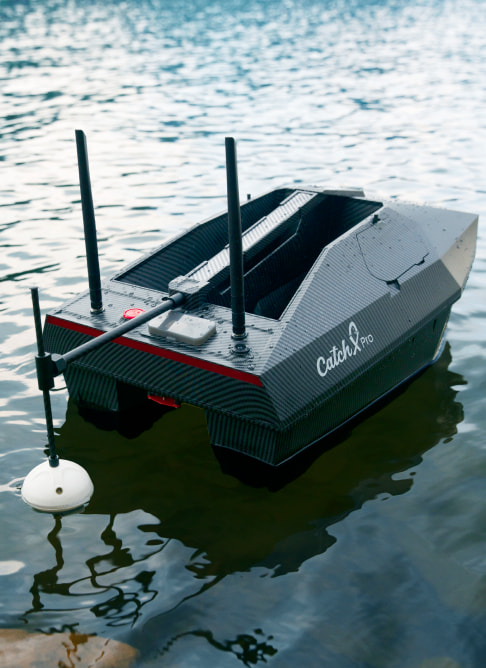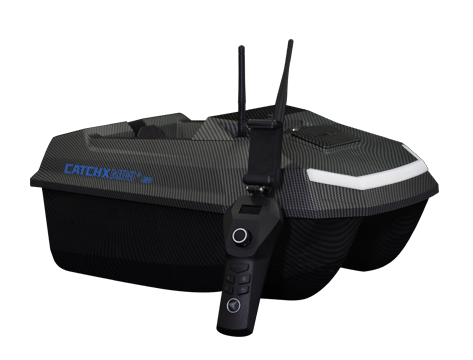Best Practices for Using Portable Fish Finders Effectively
As a fisherman, you know how important it is to have the right equipment, and a portable fish finder is an excellent tool that should be included in your fishing arsenal. Indeed, a portable fish finder can make all the difference in your fishing experience by providing you with valuable data about the location of fish and their movements. However, to benefit fully from a portable fish finder, you must use it correctly.
Understand how a portable fish finder works
To use a portable fish finder effectively, you must first understand how it works. A portable fish finder uses sonar technology to detect the presence of fish in the water. The device sends out a sound wave signal that bounces off underwater objects and returns to the device. The device then reads the signal, and using advanced algorithms, it displays the information on the screen. Modern portable fish finders are more advanced and can provide you with more data about the underwater environment, such as water depth, water temperature, and bottom structure.
Choose the right spot for your portable fish finder
The next important aspect of using a portable fish finder effectively is selecting the right spot to use it. Different types of water bodies require different areas to search for fish. For example, in a lake, fish usually congregate around structure and cover, such as drop-offs, rock piles, and weed beds. On the other hand, in rivers, fish are likely to be found in eddies, pools, and riffles. However, you must also be aware of changing water temperatures, as this can cause fish to move to different areas.
Use your portable fish finder properly
The final aspect of using a portable fish finder effectively is using it properly. This involves adjusting the settings, such as sensitivity, frequency, and zoom, to suit the conditions and target fish. For example, when fishing in shallow water, you should adjust the sensitivity to a higher setting to detect fish close to the surface. Additionally, reduce the sensitivity in deeper water, as the signal can reflect off the bottom. Moreover, a higher-frequency setting is ideal for shallower water, while a lower-frequency setting is better for deeper water. Finally, by using the zoom function, you can focus on a specific area of the water column to detect fish at a particular depth.
In conclusion, a portable fish finder is an essential tool for any angler looking to maximize their fishing experience. By understanding how the device works, selecting the right spot to fish, and using it properly, you can increase your chance of catching more fish. So, the next time you head out fishing, be sure to take your portable fish finder with you and apply these best practices to get the most out of it.
As a fisherman, you know how important it is to have the right equipment, and a portable fish finder is an excellent tool that should be included in your fishing arsenal. Indeed, a portable fish finder can make all the difference in your fishing experience by providing you with valuable data about the location of fish and their movements. However, to benefit fully from a portable fish finder, you must use it correctly.
Understand how a portable fish finder works
To use a portable fish finder effectively, you must first understand how it works. A portable fish finder uses sonar technology to detect the presence of fish in the water. The device sends out a sound wave signal that bounces off underwater objects and returns to the device. The device then reads the signal, and using advanced algorithms, it displays the information on the screen. Modern portable fish finders are more advanced and can provide you with more data about the underwater environment, such as water depth, water temperature, and bottom structure.

Choose the right spot for your portable fish finder
The next important aspect of using a portable fish finder effectively is selecting the right spot to use it. Different types of water bodies require different areas to search for fish. For example, in a lake, fish usually congregate around structure and cover, such as drop-offs, rock piles, and weed beds. On the other hand, in rivers, fish are likely to be found in eddies, pools, and riffles. However, you must also be aware of changing water temperatures, as this can cause fish to move to different areas.
Use your portable fish finder properly
The final aspect of using a portable fish finder effectively is using it properly. This involves adjusting the settings, such as sensitivity, frequency, and zoom, to suit the conditions and target fish. For example, when fishing in shallow water, you should adjust the sensitivity to a higher setting to detect fish close to the surface. Additionally, reduce the sensitivity in deeper water, as the signal can reflect off the bottom. Moreover, a higher-frequency setting is ideal for shallower water, while a lower-frequency setting is better for deeper water. Finally, by using the zoom function, you can focus on a specific area of the water column to detect fish at a particular depth.
In conclusion, a portable fish finder is an essential tool for any angler looking to maximize their fishing experience. By understanding how the device works, selecting the right spot to fish, and using it properly, you can increase your chance of catching more fish. So, the next time you head out fishing, be sure to take your portable fish finder with you and apply these best practices to get the most out of it.























